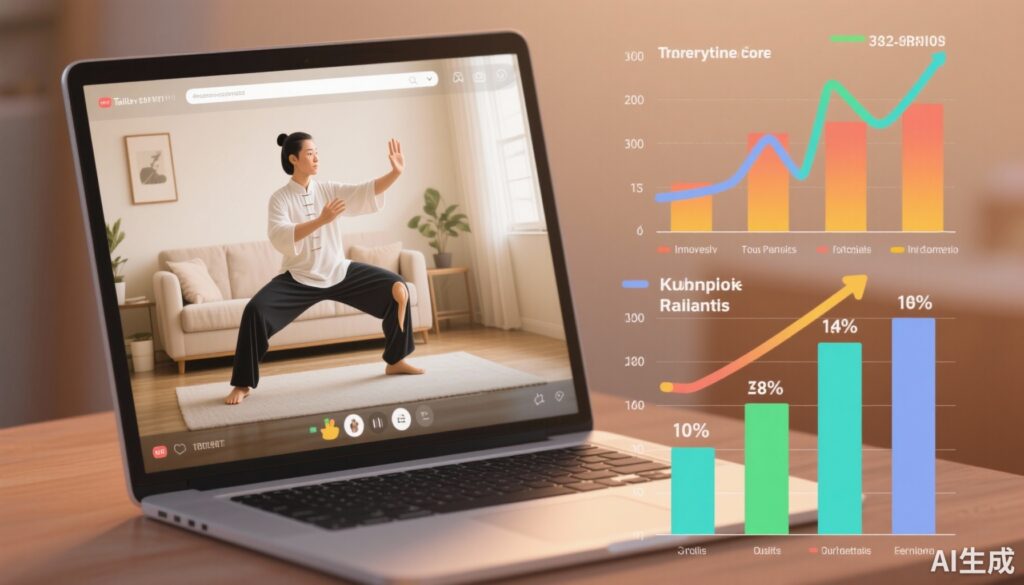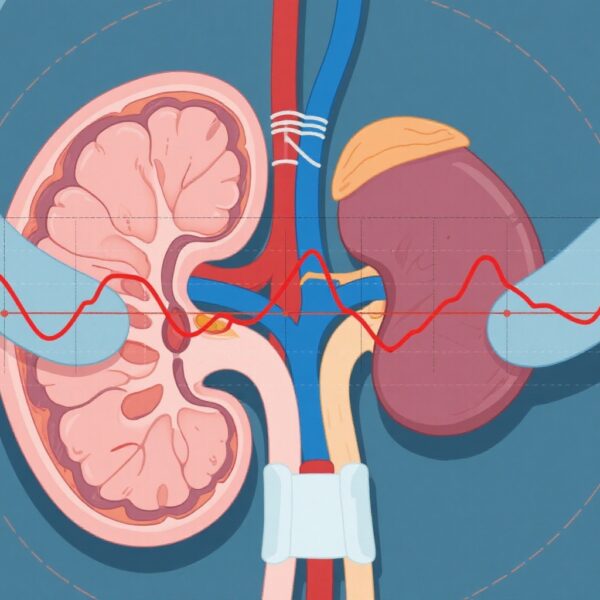Highlights
- The RETREAT trial demonstrates the effectiveness of a 12-week unsupervised online Yang-style Tai Chi program in reducing knee pain and improving function in knee osteoarthritis (OA) patients.
- A substantial proportion of patients achieved minimal clinically important differences in pain and function, favoring the Tai Chi intervention over control education alone.
- Secondary outcomes including quality of life, mental well-being, balance confidence, and pain self-efficacy also improved with Tai Chi, supporting its multidimensional benefits.
- Online delivery enables safe, accessible, scalable Tai Chi interventions, addressing barriers of in-person class availability, transportation, and supervision.
Background
Knee osteoarthritis is a prevalent degenerative joint disease causing pain, functional limitations, and reduced quality of life worldwide. Exercise is a cornerstone of OA management, recommended by clinical guidelines, with Tai Chi—a mind-body form of exercise—widely endorsed for its beneficial effects on pain, physical function, and balance. However, access to in-person Tai Chi classes remains limited due to geographic, resource, and mobility constraints. This underscores the need for effective, accessible, and scalable alternatives to traditional face-to-face Tai Chi programs to benefit a broader OA population.
Key Content
Chronological Development of Evidence for Tai Chi in Knee Osteoarthritis
Tai Chi has been studied systematically for knee OA since the early 2000s. A 2014 systematic review (Wang et al., 2014) identified six randomized controlled trials (RCTs) indicating Tai Chi’s efficacy in pain relief and physical function improvement in knee OA patients. These trials generally involved supervised or group-based Tai Chi training, with limited data on remote or unsupervised administration of this modality.
The recent RETREAT study (Zhu et al., 2025) expands on this evidence by rigorously evaluating an entirely unsupervised, multimodal online Tai Chi intervention, delivered via a purpose-built website and app, thus addressing the critical barrier of lack of access to in-person Tai Chi.
Design and Methods of the RETREAT Trial
Conducted between August 2023 and November 2024, the RETREAT trial was a two-group superiority RCT enrolling 178 participants meeting clinical criteria for knee OA from Australian communities. Participants were randomized to a control group receiving web-based educational content or to an intervention group receiving access to the same educational website plus a 12-week unsupervised video-based Yang-style Tai Chi program and app-based adherence encouragement.
The primary outcomes were changes from baseline to 12 weeks in:
- Knee pain during walking, measured by the Numeric Rating Scale (NRS; 0-10)
- Physical function difficulties measured by the Western Ontario and McMaster Universities Osteoarthritis Index (WOMAC; 0-68)
Secondary outcomes included additional knee pain measures, sport and recreation function, quality of life, mental and physical well-being, fear of movement, self-efficacy, balance confidence, positive affect, sleep quality, global improvement, and medication use.
Trial Results and Interpretation
Of the 2106 screened, 178 participants were enrolled (mean age 61.6 years, 70% female) and randomized evenly. A high completion rate (96%) was achieved for primary outcomes at 12 weeks.
Key findings include:
- The Tai Chi group experienced a significantly greater reduction in knee pain (-2.7 vs. -1.3 points; mean difference -1.4; 95% CI, -2.1 to -0.7; P < .001).
- Functional improvement was also significantly better in the Tai Chi group (-12.0 vs. -6.9 points; mean difference -5.6; 95% CI, -9.0 to -2.3; P < .001).
- Higher proportions of Tai Chi participants reached minimal clinically important difference (MCID) thresholds for pain (73% vs. 47%) and function (72% vs. 52%).
Between-group differences in most secondary outcomes favored Tai Chi, highlighting multidomain benefits in quality of life, mental well-being, balance confidence, and pain self-efficacy. - No serious adverse events were attributable to the intervention, confirming safety.
These results support clinical and mechanistic plausibility whereby Tai Chi, as a low-impact, controlled movement exercise, may enhance neuromuscular coordination, muscle strength, joint stability, and psychological wellness to offset pain and functional impairment in knee OA.
Comparative Evidence and Methodological Advances
Prior RCTs and meta-analyses have predominantly assessed physically supervised Tai Chi programs. The RETREAT trial innovates by implementing an unsupervised, video-based Yang-style Tai Chi intervention integrated with adherence-facilitating technology (mobile app).
This approach harnesses digital health innovations to reduce barriers related to class attendance, cost, physical mobility, and geographic location.
The trial’s randomized superiority design, robust outcome measures (NRS, WOMAC), high adherence and retention rates, and comprehensive secondary endpoint analyses strengthen evidence quality. The inclusion of physical and mental health outcomes aligns with growing recognition of OA as a biopsychosocial disease.
Expert Commentary
The RETREAT trial provides compelling and timely evidence endorsing an unsupervised online Tai Chi intervention as a practical and effective treatment modality for knee OA. This addresses an important gap given that traditional Tai Chi programs may be inaccessible to many, especially in remote or resource-limited settings.
Guidelines from the American College of Rheumatology and other societies recommend exercise including Tai Chi for knee OA management, yet pragmatic delivery methods remain limited. The positive outcomes shown here confirm that online Tai Chi can replicate and even extend the benefits of supervised classes.
From a mechanistic perspective, Tai Chi’s low-impact, weight-bearing movement coupled with mindfulness and breath control synergistically improves neuromuscular and psychological factors contributing to OA symptoms. The improvement in balance confidence and fear of movement may reduce fall risk and enhance patient self-efficacy.
Important considerations for clinical practice include patient education about correct Tai Chi form, potential technological barriers for elderly users, and need for ongoing motivation. Further research should explore long-term maintenance of benefits and integration with multimodal OA care.
Conclusion
The RETREAT randomized clinical trial robustly demonstrates that an unsupervised multimodal online Yang-style Tai Chi program improves knee pain and function in people with knee osteoarthritis. This accessible, safe, and scalable digital intervention provides an effective guideline-recommended exercise option to overcome barriers related to traditional Tai Chi access.
Together with prior systematic reviews confirming Tai Chi’s efficacy, online delivery approaches are poised to transform the management landscape of knee OA, promoting wider adoption and adherence to exercise therapy.
Future directions include optimizing digital user interfaces, personalized program tailoring, cost-effectiveness analyses, and studies in diverse populations globally.
References
- Zhu SJ, Hinman RS, Nelligan RK, Li P, De Silva AP, Harrison J, Kimp AJ, Bennell KL. Online Unsupervised Tai Chi Intervention for Knee Pain and Function in People With Knee Osteoarthritis: The RETREAT Randomized Clinical Trial. JAMA Intern Med. 2025 Oct 27:e255723. doi:10.1001/jamainternmed.2025.5723. Epub ahead of print. PMID: 41143827; PMCID: PMC12560028.
- Wang C, Schmid CH, Iversen MD, et al. Effects of tai chi for patients with knee osteoarthritis: a systematic review. J Phys Ther Sci. 2014 Jul;26(7):1133-7. doi:10.1589/jpts.26.1133. PMID: 25140112.



